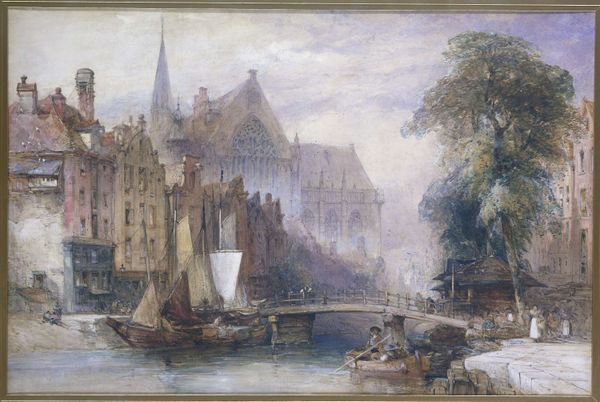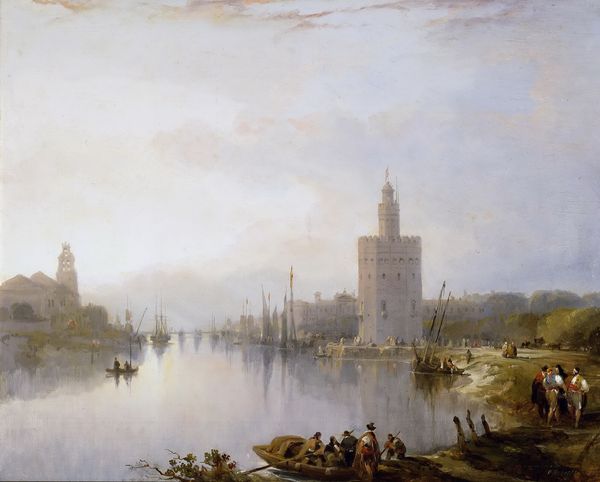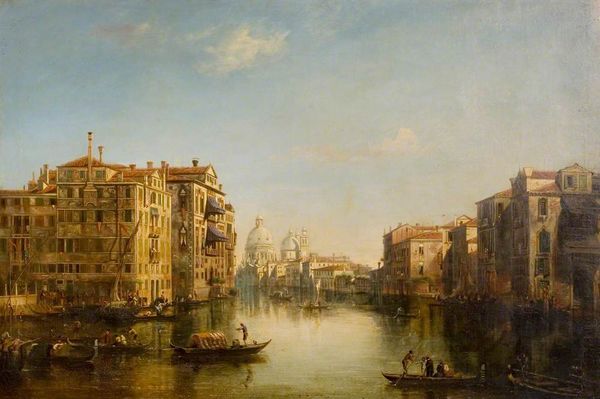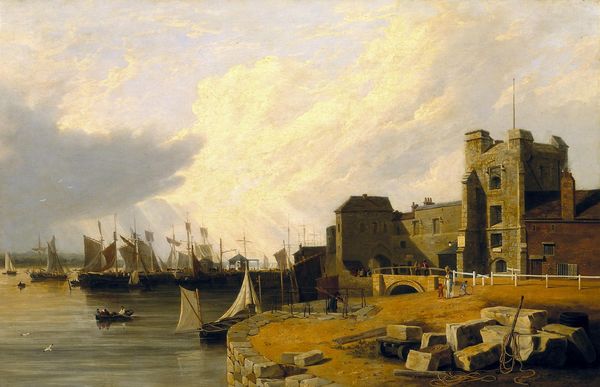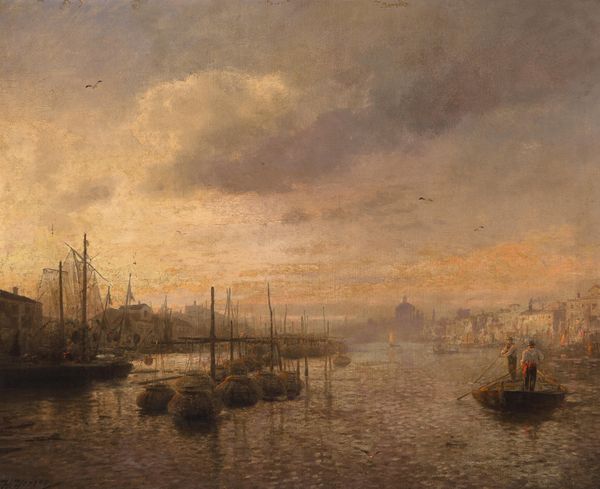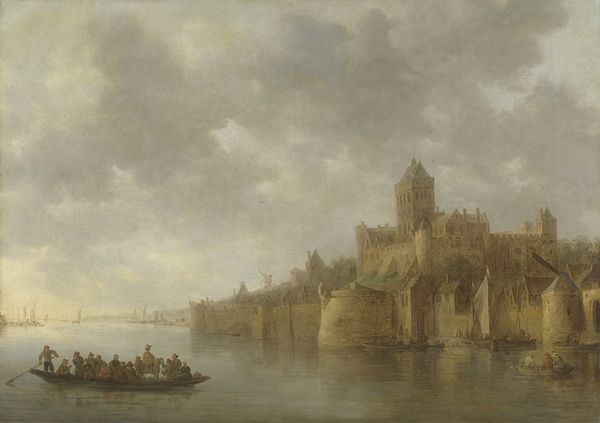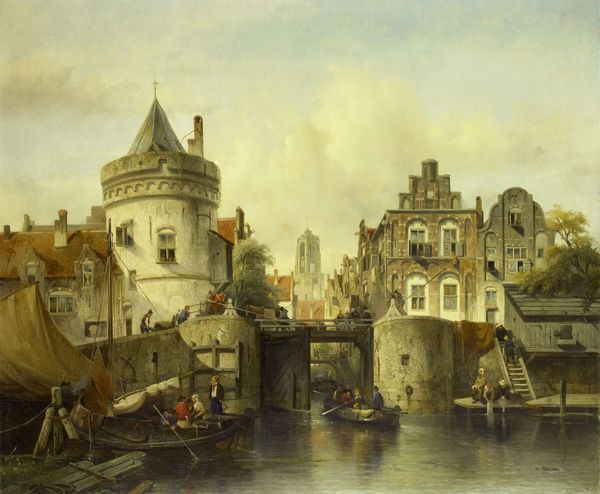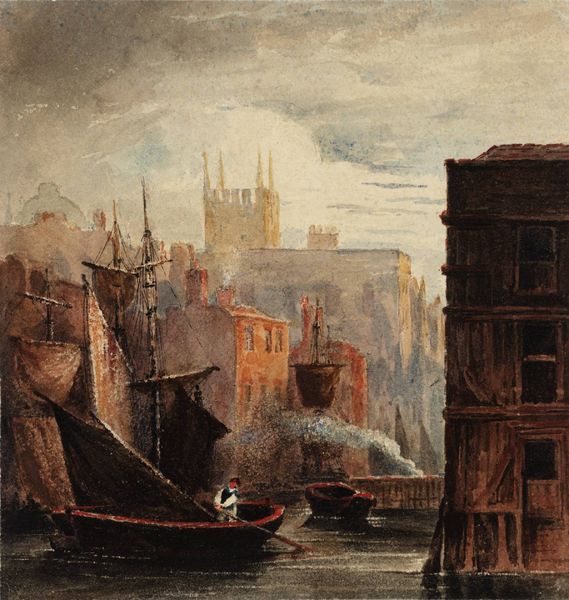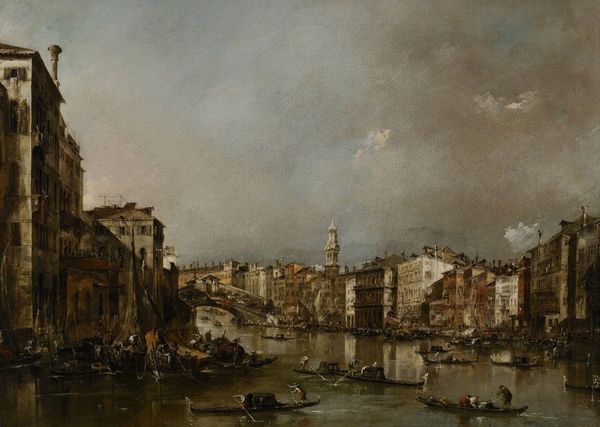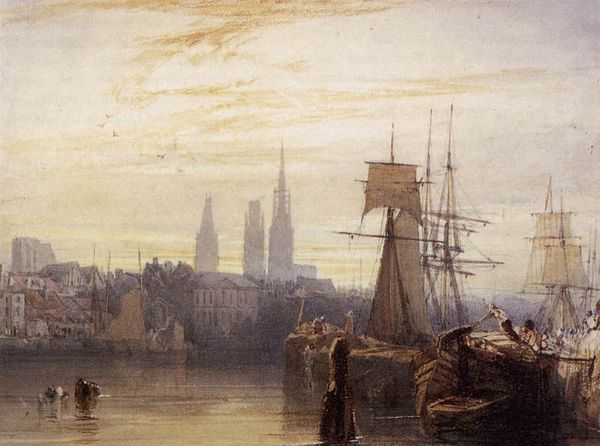
#
abstract painting
#
charcoal drawing
#
possibly oil pastel
#
charcoal art
#
oil painting
#
acrylic on canvas
#
underpainting
#
painting painterly
#
charcoal
#
watercolor
Dimensions: height 40.5 cm, width 50.5 cm, depth 9 cm
Copyright: Rijks Museum: Open Domain
Curator: Here we have Kasparus Karsen's "Imaginary View of a Riverside Town with Aachen Cathedral," painted in 1846. Editor: It feels so... tranquil. Almost melancholic, with that soft, hazy light. Like a memory. Curator: Karsen was very interested in architecture, especially historical buildings. He often depicted them, but as you can see here, he didn't always feel beholden to reality. It is, after all, an imaginary view. Note how he's taken the Aachen Cathedral and repositioned it within this invented cityscape. Editor: The cathedral looms so large, almost dominating the scene. I'm curious about the role of religious institutions at the time, the visual power they exerted… Did Karsen intend for the Church to feel… oppressive? Curator: Perhaps, or perhaps it's a symbol of continuity, of tradition in a rapidly changing world. Consider the societal role of the Church during Karsen's era; it wasn't solely a religious entity. It wielded significant social and political power. Karsen was also interested in the way cities and architecture changed over time; maybe he was putting different periods and powers in conversation with each other. Editor: I am wondering about the people here too, barely visible. Are they part of this reflection on history and power? Or are they simply there to reinforce a social hierarchy? Curator: The everyday life unfolding alongside the grand architecture, absolutely. It prompts consideration about access and privilege during the period in which Karsen was working, around the time of the Dutch constitutional reforms. Were the benefits of modernization distributed equally, or were certain groups left behind, obscured by the imposing shadow of institutions like the Church? Editor: This imaginary landscape sparks such fascinating thoughts on power and identity! Curator: It's a reminder that art often presents a subjective interpretation of reality, shaped by the artist's context. Editor: It all speaks volumes. I'm drawn to reflect on whose stories get told. Curator: Yes, an image can raise pressing questions that persist even today.
Comments
No comments
Be the first to comment and join the conversation on the ultimate creative platform.
